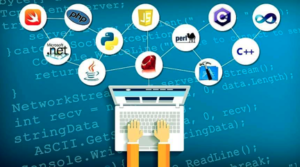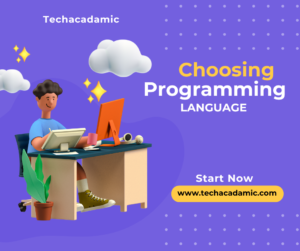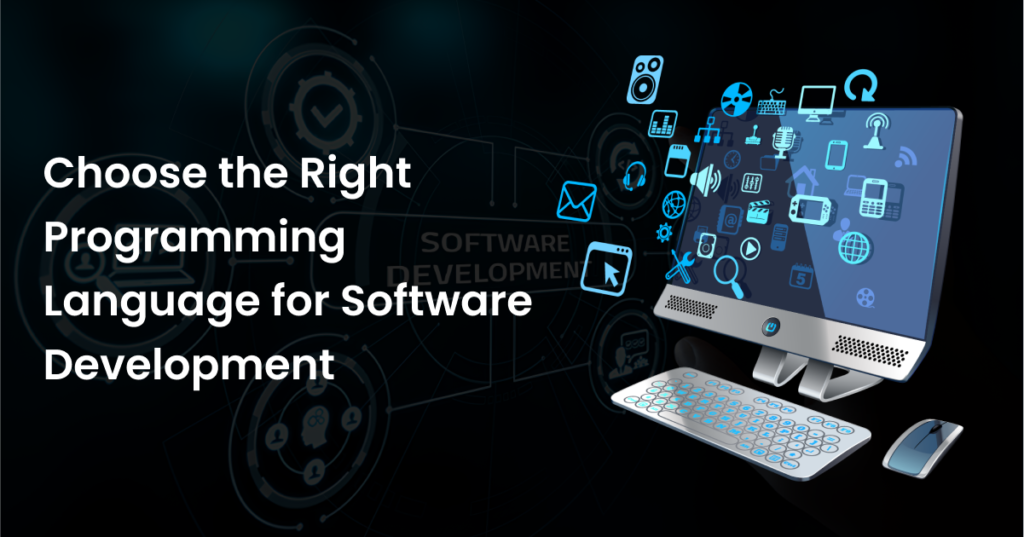Software development is constantly evolving, and so are the programming languages that drive it. Whether you’re a beginner or an experienced developer, choosing the right Programming languages for software development is crucial. Let’s explore some of the top programming languages widely used in software development today.

1. Python
Python remains one of the most popular languages due to its simplicity and versatility. Known for its easy-to-read syntax, Python is a favorite among beginners and seasoned developers alike. It’s used in web development, data science, automation, and artificial intelligence (AI). The extensive libraries and frameworks like Django, Flask, and Tensor Flow make Python a powerhouse in software development.
2. JavaScript
JavaScript is the backbone of web development, allowing developers to create dynamic and interactive web pages. Its importance grows with frameworks like React, Angular, and Vue.js, which enable the development of complex front-end applications. With Node.js, JavaScript extends to backend development, making it a full-stack language. Its adaptability and vibrant ecosystem make it a must-learn for web developers.
3. Java
Java has been used in software development for decades. Known for its stability and scalability, Java is widely used in enterprise-level applications, Android app development, and large-scale backend systems. The language’s platform independence, supported by the Java Virtual Machine (JVM), makes it a preferred choice for cross-platform development.
4. C#
C# (C-sharp) is a language developed by Microsoft, primarily used for building Windows applications and game development using the Unity engine. It’s also versatile in developing web applications with the .NET framework. C# offers a balance between performance and ease of use, making it ideal for a wide range of software projects.
5. C++
C++ is known for its performance and control over system resources, making it the language of choice for system software, game development, and applications requiring high performance. Despite being more complex compared to other modern languages, C++ is still indispensable in scenarios where optimization and efficiency are critical.
6.React.js
React.js is a popular JavaScript library developed by Facebook for building user interfaces, particularly single-page applications (SPAs). It allows developers to create reusable UI components and efficiently manage the rendering of those components using a virtual DOM. Reacts component-based architecture, flexibility, and ease of use have made it a top choice for front-end development. With the backing of a strong community and ecosystem, React continues to be a preferred solution for creating dynamic and responsive web applications.
7. Angular
Angular is a comprehensive front-end framework developed by Google for building robust web applications. It’s a full-fledged MVC (Model-View-Controller) framework that provides everything needed for large-scale enterprise applications, including powerful templating, two-way data binding, dependency injection, and more. Angular is known for its strong typing and structure, which helps in maintaining and scaling complex applications. Its built-in tools and best practices make it a reliable choice for developing dynamic single-page applications (SPAs).

8. .NET
The .NET framework is a versatile and open-source platform created by Microsoft. It supports multiple programming languages like C#, F#, and VB.NET, allowing developers to build a wide range of applications, including web, desktop, mobile, and cloud-based solutions. The .NET ecosystem includes ASP.NET for web development, Xamarin for mobile development, and a strong integration with Microsoft Azure for cloud applications. Known for its performance, security, and scalability, .NET is widely used for building enterprise-level applications.
9. HTML
In order to make a webpage, you use HTML (Hypertext Markup Language). It’s the standard language used to structure and display content on the internet. HTML defines the structure of web pages using elements like headings, paragraphs, links, images, and more. While it’s not a programming language, HTML is the backbone of any web page, forming the foundation upon which CSS and JavaScript work to enhance the appearance and functionality of websites.
10. PHP
PHP remains popular for server-side web development, especially with content management systems like WordPress, Joomla, and Drupal. It’s a highly accessible language with an extensive ecosystem, making it ideal for web developers focusing on back-end development.
How to Choose the Right Programming Language?
Project Requirements: Some languages are better suited for specific tasks, such as Python for AI or Java for enterprise applications.
Learning Curve: If you’re new to programming, languages like Python and JavaScript are great starting points.
Community and Support: Languages with large communities, like Python and JavaScript, offer extensive resources, making problem-solving easier.
Career Goals: If you’re aiming for a specific field, such as game development or mobile app development, focus on languages like C# or Katlin.
Conclusion for Programming languages for software development
The software development landscape offers a diverse range of programming languages, each with its strengths and use cases. Whether you’re building web applications, mobile apps, or system software, mastering the right Programming languages for software development will empower you to create efficient, scalable, and innovative solutions. Keep learning, stay updated with industry trends, and choose the languages that align best with your career and project goals.
